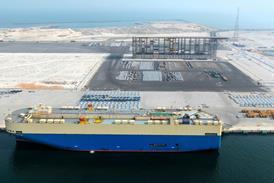Yemen’s Houthi militia have signalled that they have stopped attacks on Israel and ships in the Red Sea. Although this will likely bring optimism from those in the shipping sector, analysts feel that long-term assurances are essential.
For more than two years, global shipping and supply chains have been forced to rethink and reroute vessels owing to Houthi attacks on merchant vessels – with most using the Cape of Good Hope around the African continent as an alternative but longer route.
In a letter to Hamas’s Qassam Brigades, the Houthis have reportedly indicated that they have halted their attacks. While this marks a positive step toward regional stability, the group has yet to formally declare an end to its maritime operations, and concerns remain.
“Details are sketchy and you cannot base the safety of crews, ships and cargo on the word of Houthi militia. Carriers need far more assurance than that and, perhaps more importantly, so do insurance companies,” commented Peter Sand, chief analyst at ocean and airfreight analytics platform Xeneta. “Transits may start to increase if there is a perceived lower risk, but we are unlikely to see an imminent return to 2023 levels.”
A large-scale return to shipping via the Red Sea, according to Xeneta, could see freight rates nose-dive, followed by lower transport work required due to shorter transit times. Xeneta estimates that longer sailing distances around the Cape of Good Hope is currently absorbing around 2 million teu of global container shipping capacity and ultimately increasing transport demands on the global fleet.
“Shippers should be making contingency plans because a large-scale return would cause severe disruption across global ocean supply chains as services transiting Suez Canal are reinstated,” Sand added. “There are still many questions to be answered, but the impact of a large-scale return would be seismic for shippers and carriers.”
















